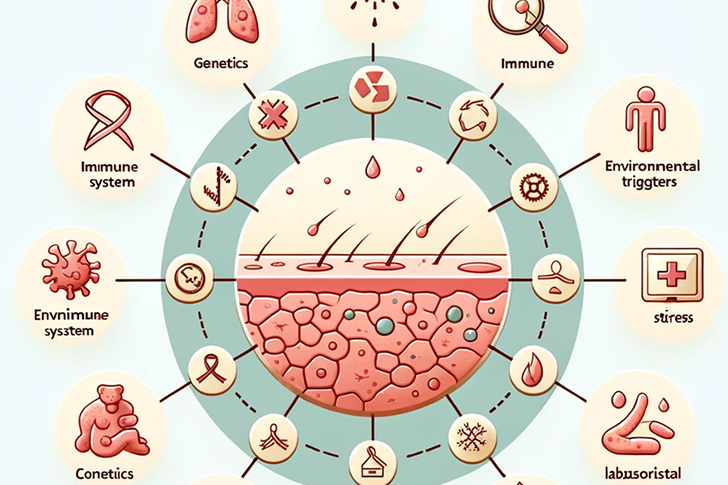Psoriasis: Symptoms, Types, and Treatments
Psoriasis is a chronic skin condition that results in thick, red, scaly patches. This article explores its types, causes, and treatments.

Introduction:
Psoriasis is more than just a skin condition—it’s a persistent, chronic autoimmune disease that significantly impacts the lives of millions globally. Characterized by the rapid buildup of skin cells, this acceleration causes scaling on the skin’s surface, accompanied by inflammation and redness. The condition varies in severity and can manifest in multiple forms, affecting different parts of the body including the scalp, nails, and joints. In this article, we will explore what psoriasis is, its types, causes, symptoms, and the latest statistics, providing a clear, factual understanding of the condition.
Understanding Psoriasis:
At its core, psoriasis causes skin cells to multiply up to 10 times faster than normal, leading to the buildup of bumpy red patches covered with white scales. They can grow anywhere, but mostly appear on the scalp, elbows, knees, and lower back. Psoriasis is notoriously unpredictable and can range from mild patches to major eruptions that cover large areas.
Types of Psoriasis:
There are several types of psoriasis, each with distinct characteristics:
- Plaque Psoriasis: The most common form, characterized by dry, raised, red skin lesions (plaques) covered with silvery scales.
- Nail Psoriasis: Affects the fingernails and toenails, causing pitting, abnormal nail growth, and discoloration.
- Guttate Psoriasis: Typically triggered by a bacterial infection such as strep throat, it appears as small, water-drop-shaped, scaling lesions on the trunk, arms, legs, and scalp.
- Inverse Psoriasis: Shows up as bright red, shiny lesions that appear in skin folds, such as under the breasts, in the groin, or around the genitals and buttocks.
- Pustular Psoriasis: Characterized by white pustules (blisters of noninfectious pus) surrounded by red skin.
- Erythrodermic Psoriasis: The least common type of psoriasis, erythrodermic psoriasis can cover your entire body with a red, peeling rash that can itch or burn intensely.
Causes and Triggers:
While the exact cause of psoriasis is not fully understood, scientists believe it is related to an immune system problem with T cells and other white blood cells, called neutrophils, in your body. Triggers that may start or worsen psoriasis include infections, stress, cold weather, smoking, heavy alcohol consumption, and certain medications.
Statistics and Impact:
According to recent studies, psoriasis affects about 2-3% of the global population, translating to approximately 125 million people worldwide. In the United States alone, over 8 million Americans suffer from psoriasis. Despite its widespread occurrence, about 60% of psoriasis sufferers report a significant impact on their quality of life, making it a critical health issue with a substantial social and psychological burden.
Treatment and Management:
There is currently no cure for psoriasis, but various treatments can help control the symptoms. These may include topical treatments, phototherapy, and systemic medications. Biologic drugs, a newer class of treatment, specifically target the immune response that leads to the rapid skin cell growth typical of psoriasis. Lifestyle changes, such as maintaining a healthy diet, reducing stress, and avoiding specific triggers, can also help manage flare-ups.
Conclusion:
Understanding psoriasis and its impact on individuals is crucial for fostering empathy and promoting effective management strategies. Advances in treatment offer hope and improved quality of life for those affected. By staying informed, patients can better navigate their symptoms and treatment options, leading to better overall health outcomes.







Recent Comments